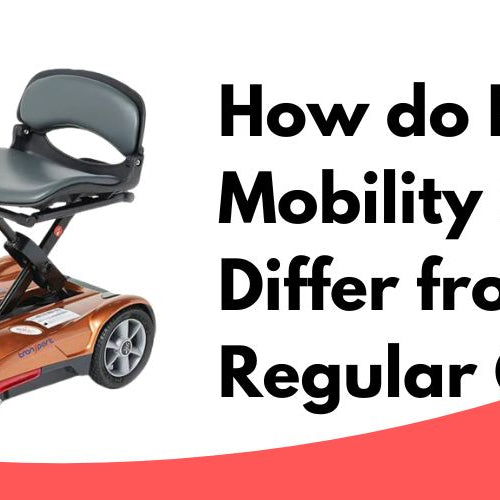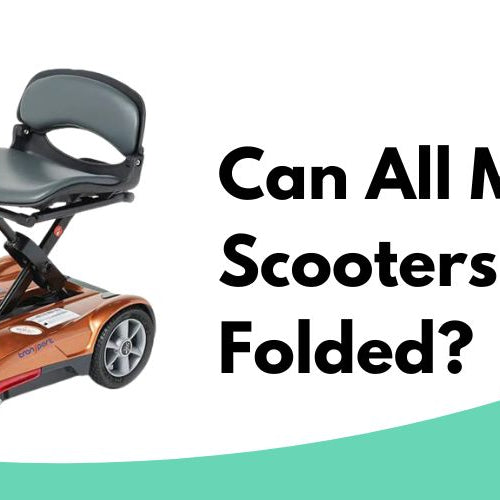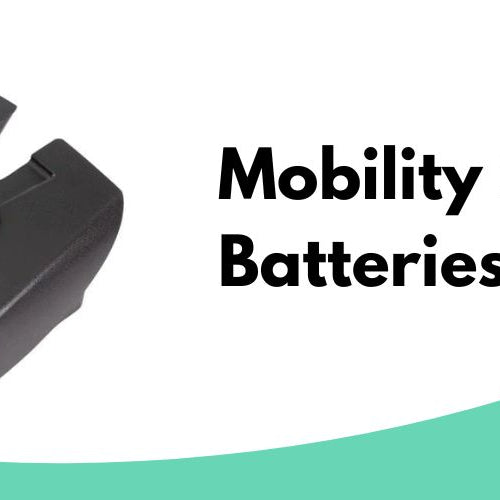Hoyer Lift and Patient Lift are terms often used interchangeably, but there are differences to consider when choosing the best lift system for your needs. Both types of lifts are designed to transfer medically dependent individuals safely, reducing the risk of injury for both the patient and the caregiver. Understanding the features and benefits of each system will help you make an informed decision on which one suits your specific situation.
A Hoyer Lift is a mobile floor lift system with wheels, intended for lifting, suspending, and transferring a patient. Hoyer lifts consist of a sling-like contraption that slides under the patient's body, providing stability and support during the transfer. These lifts are versatile and flexible, as they can be easily moved and adjusted to fit various situations, such as moving a patient between bed and wheelchair, or assisting with transfers in a variety of settings, including hospitals, care facilities, and homes.
On the other hand, a Patient Lift typically refers to a broader category of lift systems, which includes Hoyer lifts as well as ceiling lifts, stand-up lifts, and other specialized equipment. Ceiling lifts, for example, are installed directly onto the ceiling, providing an overhead support system for patient transfers. They offer a secure, space-saving solution, especially in smaller rooms or where floor space is limited. Stand-up lifts are designed to help patients with some weight-bearing capacity but need assistance in moving from a seated to a standing position.
In summation, when discussing Hoyer Lift versus Patient Lift, it is essential to recognize that while they share some similarities, their differences lie in the specific applications and features they offer. By understanding these subtleties, you can choose the right lift system based on your unique requirements and ensure safe and efficient transfers for both the patient and caregiver.
Hoyer Lift
General Overview
A Hoyer lift is a type of patient lift commonly used in healthcare institutions and home settings for transferring patients with limited mobility. It is designed to help caregivers move patients safely, reducing the risk of injury for both the patient and the caregiver. Hoyer lifts are an essential aid for those who require assistance with transferring from a bed, wheelchair, or other similar surface.
Types of Hoyer Lifts
There are various types of Hoyer lifts, each designed to meet specific needs. Some common types include:
-
Manual Hoyer Lifts: These are operated by a caregiver using hydraulic pumps or levers. They require physical effort from the caregiver but are usually more affordable than electric or battery-powered lifts.
-
Electric Hoyer Lifts: These lifts use electric motors to lift and move the patient, requiring minimal physical effort from the caregiver. They are usually more expensive and may require a power source nearby.
-
Battery-Powered Hoyer Lifts: Similar to electric lifts, battery-powered lifts operate on rechargeable batteries, providing greater mobility during transfers since no power source is necessary.
-
Stand-Up Lifts: Designed for patients with some weight-bearing capabilities, stand-up lifts assist with transitioning from a seated to a standing position or visa versa.
-
Ceiling Lifts: These lifts are mounted on tracks installed on the ceiling, allowing for smooth transfers without taking up floor space. They may be manual or powered and are suitable for both residential and institutional settings.
Safety Features
Hoyer lifts come equipped with various safety features to protect patients and caregivers during transfers. These features may include:
-
Sling attachment: Slings securely hold the patient during the lift process, distributing weight evenly for a comfortable and safe transfer.
-
Emergency stop button: In the event of a problem during a transfer, electric and battery-powered lifts often have an emergency stop button that immediately stops the lift.
-
Locking casters: With locking casters, the base of the lift can be secured in place to prevent movement while lifting the patient.
-
Weight capacity: Hoyer lifts have specific weight capacities, typically ranging from 300 to 600 pounds, which ensures they can safely support the patient's weight.
Benefits
There are several benefits to using a Hoyer lift, such as:
-
Reduced risk of injury: By using a lift, caregivers can avoid strain and injury that may come from manually transferring patients.
-
Improved patient comfort: Hoyer lifts offer a more comfortable experience for patients, as slings evenly distribute their weight during transfers.
-
Increased independence: For patients with limited mobility, Hoyer lifts present an opportunity for increased independence, allowing access to different areas and activities.
-
Enhanced caregiver efficiency: With a Hoyer lift, caregivers can transfer patients more efficiently and effectively, saving time and effort.
Patient Lift
General Overview
A patient lift is a device designed to assist caregivers in safely transferring patients with limited mobility. This equipment is crucial in healthcare institutions, nursing homes, and home-based care settings to ensure the wellbeing of patients and caregivers. These lifts help prevent injuries and allow for more comfortable transfers for both the caregiver and the patient.
Types of Patient Lifts
There are several types of patient lifts available on the market. Some of the common types include:
-
Hoyer Lift: A Hoyer Lift is a mobile floor lift system that has wheels, making it easy to maneuver. It is designed to help lift, suspend, and transfer medically dependent people, providing support and comfort during the process.
-
Stand-Up Lift: This type of patient lift is specifically designed for individuals who can bear some weight but need assistance with standing and transferring. They provide support and assistance in going from a seated to a standing position.
-
Ceiling Lift: Ceiling lifts are mounted to the ceiling or overhead track system, providing smooth and easy transfers from one location to another. They provide a more permanent solution and save floor space as they don't require any additional storage when not in use.
Safety Features
Patient lifts come with various safety features to protect both the patient and caregiver during transfers. Some key safety features include:
-
Emergency Lowering Mechanisms: In case of a malfunction, lifts are equipped with manual or battery-operated mechanisms to safely lower the patient to the ground.
-
Locking Casters: To ensure stability during transfers, most lifts have locking wheels to prevent the device from moving involuntarily.
-
Safety Belts and Slings: These are essential components of patient lifts, providing support and secure positioning for the patient during transfers. Slings are designed to fit comfortably, minimize pressure, and come in various sizes and materials.
Benefits
Patient lifts offer several benefits to both patients and caregivers:
-
Reduced Risk of Injury: By using a patient lift, the risk of injury to both patients and caregivers during transfers is significantly reduced. Proper use prevents back strain and other injuries related to manual lifting.
-
Increased Comfort: Lifts provide a more comfortable and smooth experience for patients, reducing potential stress during transfers.
-
Efficiency: Patient lifts make transfers more efficient, saving time and effort for caregivers.
-
Promotes Independence: With the help of patient lifts, patients who have limited mobility can experience more independence and a better quality of life.
In summary, patient lifts play a critical role in ensuring the safety and wellbeing of patients and caregivers during transfers. By understanding the different types of patient lifts and their features, you can make an informed decision on the best lift option for your specific needs.
Comparison: Hoyer Lift vs. Patient Lift
Functionality
Hoyer lifts and patient lifts serve similar purposes in assisting caregivers with lifting and transferring patients with mobility challenges from one place to another. A Hoyer lift is a specific brand of patient lift, and the terms are often used interchangeably. These lifts are frequently used in medical facilities, homes, or nursing homes and provide support to people who face difficulty in moving on their own.
A Hoyer lift typically consists of a hammock-type sling that holds the patient securely while they are lifted and transferred to a new surface. On the other hand, there are various types of patient lifts, including stand-up lifts, ceiling lifts, and sit-to-stand lifts, each with specialized functionality tailored to specific needs.
Ease of Use
Both Hoyer lifts and patient lifts are designed to make it easier for caregivers to lift and move patients or seniors with mobility challenges. Hoyer lifts are known for their reliability, ease of use, and safety features, making them an excellent choice for many situations. Patient lifts, depending on the type, can offer similar levels of ease in operation, but the choice largely depends on the patient's specific needs and the caregiver's preferences.
For instance, a stand-up lift can be useful for patients who have some weight-bearing ability and require assistance to stand up from a seated position. A ceiling lift may be more appropriate in situations where the patient needs to be frequently moved between rooms or floors, as it is permanently installed and provides exceptional stability.
Cost Analysis
When comparing costs, Hoyer lifts are often considered some of the best patient lifts on the market. However, they can also be more expensive compared to others. Prices of Hoyer lifts and patient lifts can vary depending on factors like the type of lift, brand, specific features, and more.
To help make an informed decision, it is crucial to consider not just the upfront cost but also additional expenses like maintenance, replacement parts, accessories, and the cost of training caregivers to use the equipment safely and effectively.
In summary, both Hoyer lifts and patient lifts serve the purpose of assisting caregivers in lifting and transferring patients with mobility challenges. While Hoyer lifts are a popular option known for their reliability and ease of use, other types of patient lifts can cater to various needs and preferences. Considering factors like functionality, ease of use, and cost analysis can help in choosing the most suitable lift for a particular situation.
Choosing the Right Lift
Caregiver Considerations
When selecting the appropriate lift for a patient, a caregiver should consider their own comfort, safety, and ability to operate the device. Hoyer lifts and patient lifts are designed to assist in transferring patients, but the level of caregiver involvement may differ between the two. A Hoyer lift typically requires more physical labor from the caregiver, while many modern patient lifts are electric or battery-powered, allowing for easier operation.
Some factors that should be considered include:
-
Weight capacity: Both lifts will have a maximum weight capacity, so choose one that will accommodate the patient's weight.
-
Ease of use: Select a lift with clear instructions and intuitive controls to ensure a smoother caregiving experience.
-
Safety features: Look for features such as locking casters, emergency stop buttons, and secure straps to minimize potential accidents.
Patient Needs
The patient's individual needs and preferences should also be taken into account when choosing a Hoyer lift or patient lift. Depending on the patient's mobility, a specific type of lift might be more suitable.
Consider the following factors:
-
Comfort: Some patients might prefer a sling with padding for added comfort, while others may require a more rigid support due to their condition.
-
Range of motion: Patients with limited mobility may benefit from a lift with a larger range of motion, enabling them to be moved more easily and safely.
-
Adjustability: Look for a lift with adjustable features, such as sling height or reclining capability, to accommodate patients with different needs.
Space Requirements
Lastly, the available space in the caregiving environment must be taken into consideration when selecting a Hoyer lift or patient lift. Both devices require adequate space for maneuverability and storage.
Important factors to think about include:
-
Dimensions: Ensure that the chosen lift will fit in the caregiving space, with enough room for caregivers to move around and operate the device.
-
Portability: If the lift will be used in multiple locations, a portable device with easy disassembly and reassembly may be more appropriate.
-
Clearances: Be aware of doorways, furniture, and other obstacles that might impede the lift's operation, and choose a lift that can navigate these challenges.
By carefully evaluating caregiver considerations, patient needs, and space requirements, you can make an informed decision when choosing between a Hoyer lift and a patient lift at Mobility Nest.






Leave a comment